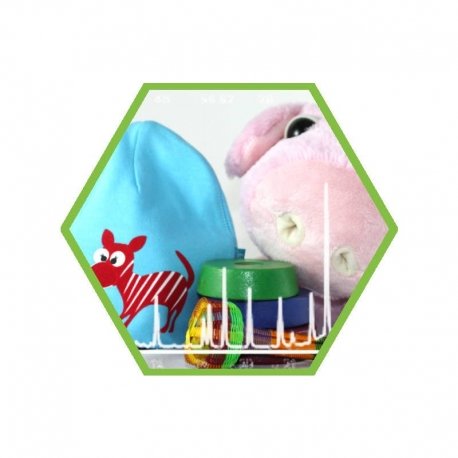{:de}

Schadstoff-Analysen für Kleidung, Lederwaren und Textilien
Zu den größten Imageproblemen der Textilindustrie dürften sicherlich die Herstellungsbedingungen zählen. Kinderarbeit, Hungerlöhne und fehlende Sicherheit werden häufig mit der Herstellung von Kleidung in Verbindung gebracht.
Ein weiteres Problem sind die Schadstoffe, die immer wieder in den Textilien gefunden werden. Hier listen wir Ihnen auf:
- welche Schadstoffe in Kleidung und Textilien vorkommen
- wie die Schadstoffe ins Produkt gelangen
- mit welchen Analysen Sie Ihre Kleidung untersuchen lassen können
Pestizide
Zum einen gibt es da die Pestizide, die auf den Baumwollplantagen aber auch in der Schafzucht und Wollproduktion eingesetzt werden.
Speziell die Insektizide und Fungizide werden bei Schafen zum Schutz vor blutsaugenden Insekten verwendet. Sie sind am Ende häufig auch noch in der Wolle nachweisbar. Daraus hergestellte Produkte wie Wollsocken, Pullover oder auch die Schaffelle für den Kinderwagen sind oft hoch belastet.
Halogenorganische Verbindungen (AOX)
Dann gibt es die halogenorganischen Verbindungen (AOX), die als Rückstände aus dem Färbeprozess in der Kleidung verbleiben. Einige Verbindungen aus dieser Gruppe können Allergien auslösen, andere sind sogar als krebserregend eingestuft. Ökotest hatte im Test in Heft 01/2017 gleich sieben Kinderjeans wegen dieser Verbindungen abgewertet.
Färbemittel / Schwermetalle
Die Färbemittel können weitere Gefahrstoffe bergen. Zum einen das Anilin, welches in Farbbausteinen verwendet wird. Zum anderen Schwermetalle, die aus den Pigmenten (die zum Färben eingesetzt werden) ihren Weg in die Textilien finden.
Formaldehyd
Dann gibt es noch Chemikalien, die gezielt zugesetzt werden um bestimmt Eigenschaften zu erzeugen. Formaldehyd z.B. sorgt für knitterfreie Kleidung – und leider auch für die Reizung der Schleimhäute. In höheren Konzentrationen kann es Allergien auslösen. Weitere Informationen dazu finden Sie auf unserer Themenseite zu Formaldehyd.
Weichmacher / PAK
In den aufgedruckten Motiven auf Pullover oder T-Shirts können sich Weichmacher oder polyzyklische aromatische Kohlenwasserstoffe (PAK) verstecken.
Einige Weichmacher sind als reproduktionstoxisch eingestuft. In der Gruppe der PAK sind viele Verbindungen als krebserregend bekannt.
Chrom VI
Chrom VI findet sich in vor allem in Lederwaren, aber auch in Textilien. In den Lederprodukten ist zu finden, wenn die Gerbung nicht einwandfrei durchgeführt wurde. In Textilien wird es durch die Farbpigmente eingetragen.
Fazit:
Es ist gut, dass die Problematiken in der Textilbranche immer mehr in den Fokus rücken und die Anspruchshaltung der Konsumenten sich verändert. Faire Arbeitsbedingungen und schadstofffreie Textilien sind für viele Konsumenten mittlerweile ein wichtiges Kriterium. Aber wie der Test von Bio Kinderjeans in der Ökotest Ausgabe 01/2017 zeigt, sind noch lange nicht alle Herausforderungen gemeistert.
Textil Analysen bei my-lab International:
 |
Material / Leder: Chrom VIZACCR Downloads: |
 |
Textilien: Pestizide (Organochlorpestizide, Organophosphorpestizide, Säuren)MPT01 Downloads:
|
 |
Farbstoffe in TextilienMTEX1 Downloads: |
 |
Textilien: organische HalogeneMCX03 Downloads:
|
 |
Material / Holz / Textilien: FormaldehydMCF05 |
 |
Material/Kunststoff/Textilien: PAK (EPA)MPAH2 Downloads: |
 |
Material / Kunststoff / Textilien: WeichmacherTWM01 Downloads: |
Bildnachweise
- Titelbild und Beitragsbild von my-lab International, Modifiziert von my-lab International
{:}{:en}
Pollutant analyses for clothing, leather goods and textiles
The main image problem in the textile industry are certainly the manufacturing conditions. Child labor, hunger wages and lack of safety are often associated with the production of clothing.
Another problem is the pollutants, which are repeatedly found in the textiles. Here we will show you:
- Which pollutants occur in clothing and textiles
- How the pollutants get into the product
- With which analyses you can have your clothes examined
Pesticides
Foremost there are the pesticides, which are used on the cotton plantations but also in the sheep breeding and wool production.
Specifically, the insecticides and fungicides are used on sheep to protect against bloodsucking insects. SThey are often found in the wool. Products made of wool, such as woolen socks, sweaters or the furniture for baby carriages, are often highly stressed.
Halogenated organic compounds (AOX)
Second there are halogen-organic compounds (AOX), which remain as residues from the dyeing process in the clothing. Some compounds from this group can trigger allergies, others are even classified as carcinogenic. The German Newspaper “Ökotest” (issue 01/2017) had depreciated seven children’s jeans in its test because of these connections.
Dyes / heavy metals
The dyes can contain further hazardous substances. Zum einen das Anilin, welches in Farbbausteinen verwendet wird. On the one hand the aniline, which is part of the dye molecule. On the other hand, heavy metals are found in the pigments (which are used for dyeing) and find their way into the textiles.
Formaldehyde
Then there are also chemicals, which are added specifically to produce certain wanted properties. For example, formaldehyde provides wrinkle-free clothing – but unfortunately its also responsible for irritating the mucous membranes. In higher concentrations it can trigger allergies.For further information, please visit our Topicpage for Formaldehyde.
Plasticizer / PAH
In the imprinted motifs on sweaters or T-shirts, plasticizers or polycyclic aromatic hydrocarbons (PAHs) can be hidden.
Some plasticizers are classified as toxic to reproduction. In the group of PAH, many compounds are known to be carcinogenic.
Chromium VI
Chrom VI is found mainly in leather goods, but also in textiles. It can be foud in leather products if the tanning has not been performed properly. In textiles it is introduced by the color pigments.
In Conclusion:
It is a good thing that people are becoming more aware of the problems in the textile sector, and also consumer expectations are changing. Fair working conditions and harmless textiles are now an important criterion for many consumers. But as the test of so called “Bio Childjeans” in German newspaper “Ökotest” (issue 01/2017) shows, still not all challenges are mastered.
Textile analyzes at my-lab International:
 |
material/leather: chromium VIZACCR |
 |
textiles: pestizides (Organochlorpestizides, Organophosphorpestizides, acid)MPT01
|
 |
Farbstoffe in TextilienMTEX1 |
 |
textiles: organic halogensMCX03
|
 |
material and wood: FormaldehydMCF05 |
 |
material: PAH (EPA)MPAH2 |
 |
materials (different): analysis of softeners (phthalates)TWM01 |
Pictures taken from
- Sources: Jeff Kramer/flickr | CC BY 2.0 | modified by my-lab International
{:}




